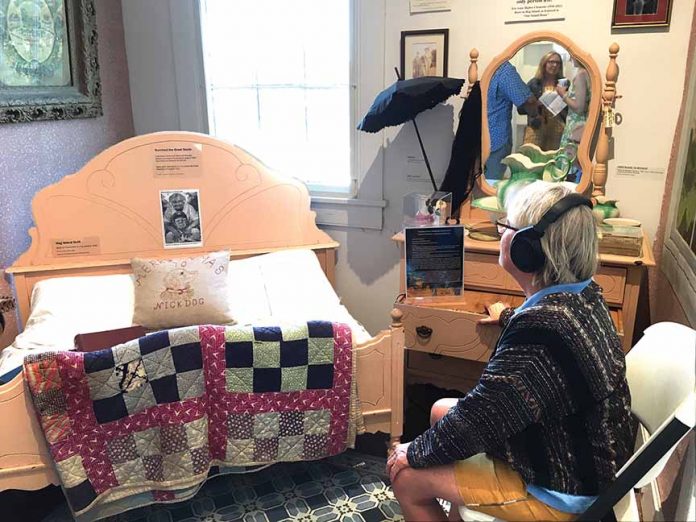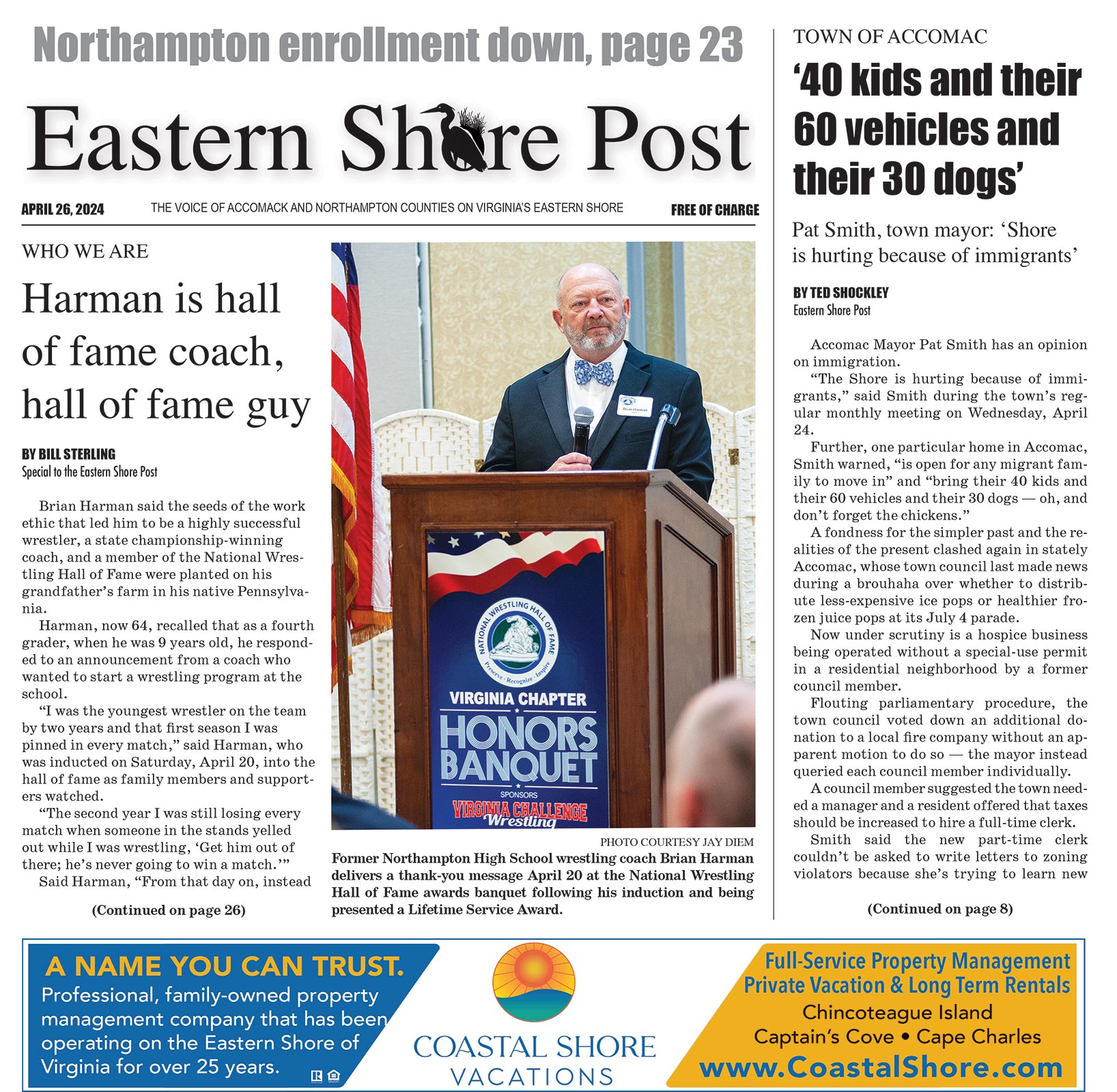
By Stefanie Jackson – Science and art come together and beckon the willing listener to embark on a sonic journey at the newest exhibit that opened Sept. 21 at the Barrier Islands Center in Machipongo, Sounding Science: Listening for Coastal Futures.
“You’ve heard the phrase, ‘We need to listen to the science,’ so we have created ways for you to listen to the science in new ways,” said Willis Jenkins, a University of Virginia professor who also works in the environmental humanities.
The exhibit features field recordings, many of which have been “sonified” by music composers, allowing a broad audience to hear and understand scientific data in a different perspective.
Sounding Science was made possible by a UVA grant awarded to the Coastal Futures Conservatory, of which Jenkins is a member. The conservatory integrates arts and humanities into the studies conducted by the Virginia Coast Reserve, which has a research facility in Oyster directed by Cora Johnston.
The exhibit of nine listening stations is on the second floor of the Barrier Islands Center. If one visits the stations in order, one may note a progression from the real to the abstract, from sound to music.
Station 1 features “Barrier Island Ecosystem Field Recordings” by Matthew Burtner. One hears the simple sounds of crabs scuttling across the banks of the Eastern Shore. They are fiddler crabs that dig tunnels in the mud. One can also hear water lapping against the shore. Listen closer to hear the forces of both erosion and coastal resilience, the author says.
At Station 2, though no melody is heard, the sounds of music arrive during “Seaside Oyster Reef Recordings and Translations” by Eli Stine. The impression of water flowing and trickling is intermingled with reminiscences of an orchestra, perhaps even a calliope, and the clear but tentative tapping of piano keys.
Station 3 features the work of composer Christopher Luna-Mega and data compiled by Karen McGlathery and R.R. Christian from a water-quality sampling of ammonium and phosphate. The composition evokes the sounds of the ebb and flow of a gentle wind.
At Station 4, “Dreams of Seagrasses” by Matthew Burtner, incorporating data collected by McGlathery and Peter Berg, might appeal to those who appreciate popular, modern music. In the background, one can hear slow strings and rustling seagrass. Almost melodic, electronic, even robotic tones accompany sounds like crabs walking through grass and an underwater creature feeding. “This sonification explores the photosynthesis and respiration of seagrasses,” the author writes.
Station 5 presents “Piano etude no. 2: Tidal Flow,” also by Luna-Mega. A rising and falling tide is heard in the background, with high and low piano notes corresponding to the tide’s height in meters, one pitch per day. Hide tides are played with the right hand and low tides are played with the left hand, resulting in an odd and mystical composition.
At Station 6, the moaning of whales is heard in addition to noises so exotic, the listener may mistake them for the sounds of birds preening their feathers and insects’ wings flitting in a jungle rather than the sounds of any creature that lives underwater.
Station 7 contains the only composition featuring poetry. It’s recited with a background of water spurting and shooting and waves roaring mightily yet softly.
The composition heard at Station 8 is titled “[in],” by Erik Deluca. Water seems to crackle and bubble and waves roll and rumble. The author notes the sounds heard include a variety of marine life, including snails, crabs, koi, a dolphin, and a manatee.
More underwater creatures are heard at Station 9, including whales calling and other wild sea life howling and shrieking. And if it seems like an elephant is trumpeting, don’t worry – it’s probably just a walrus.
For more information on the composers and scientists who made this science and humanities project possible, visit the Barrier Islands Center and check out Sounding Science, the exhibit that has to be heard to be believed.
The Sounding Science exhibit will be open through Dec. 21.


